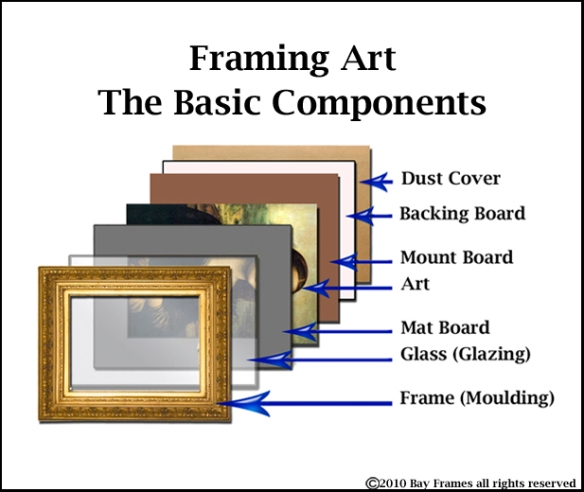Getting a Price Quote on the Phone:
When you call a professional picture framer there is some basic information that will help them give you a more accurate price quote by phone.
When calling for a quote, here is the information they will need, with a more detailed explanation below:
- Size of artwork.
- Type of art (poster, textile, canvas, photograph, original art, etc.).
- General idea of width and color of frame you’d like.
- Mats around the art or not.
- Glass or Plexiglas
Size of Artwork: Measure the height and width. This helps determine the amount of materials your art will require.
Type of Art: Each type of artwork has different material and labor requirements.
- Posters – Most requested frame is a simple black. Most posters are framed without mats, though that is an option. If a mat is not used, there will need to be narrow spacers used between the glass and the art so they don’t touch.
- Textiles – This includes sports jerseys, silk embroideries, and needlepoint, anything that is made with fabric. These require mounting onto a backing board and extra care.
- Canvas – This requires stretching on bars or mounting on a board.
- Photograph – These require either a mat board or spacers so the glass and photo don’t touch.
- Original art or limited edition art with a high value – These require conservation materials in the matting, backing board and a glass with light protective features.
- Objects – these require a deeper frame (called a “shadowbox”) and extra labor to secure them.
Frame Style:
- Frames are available in all colors, widths and prices. Let your framer know if you want economy or average or higher end for price quotation purposes
- Width of frame becomes a factor on larger pictures. A framer can put a skinny frame on a large job, but they will need to reinforce it, so there’s actually little price savings over a wider frame that is strong enough for the larger size art.
Matting:
- Mats are often used to give the art a “finished” look, or to add size, or to add color to the framed presentation. Mats also serve the purpose of keeping the glass off the art.
- When matting, there is a top, wider mat and often another thin mat that shows on the inside edges.
Glass (sometimes referred to as “Glazing”):
- Most art requires the glass to protect it. The exceptions are oil paintings and some textiles.
- There are options with glass, including non-glare, UV protected, and a combination of both. Plexiglas is recommended for large framed art and also comes with similar options.
For Fast, Friendly, Affordable Framing visit our website: BAY FRAMES.COM


